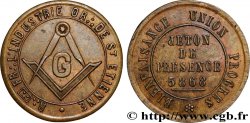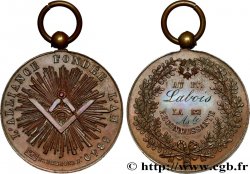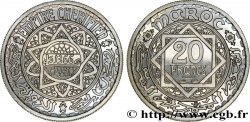Live auction - fme_635274 - FRANC-MAÇONNERIE - PARIS Médaille, La concorde, Orient de Sens, Bicentenaire
Usted debe firmar y ser un comprador aprobado para pujar, Inicia sesión para pujar. Las cuentas están sujetas a la aprobación y el proceso de aprobación se alcanzan dentro de las 48 horas. No espere hasta el día en una venta se cierra el registro.Al hacer una oferta en este artículo usted está firmando un contrato jurídicamente vinculante para comprar este artículo y haga clic en «oferta» constituye una aceptación de los términos de uso de live auctions de cgb.fr.
La subasta debe ser colocado en euros enteros cantidades venta only.The se cerrará en el momento en la descripción del artículo, no se ejecutarán las ofertas recibidas en el sitio después de la hora de cierre. Veces Transmition pueden variar y las ofertas pueden ser rechazadas si espera a los últimos segundos. Para más información envie el FAQ Live auction.
Las ofertas ganadoras estarán sometidas a un 18% IVA incluido por gastos de participación a la venta.
Las ofertas ganadoras estarán sometidas a un 18% IVA incluido por gastos de participación a la venta.
| Valoración : | 150 € |
| Precio : | 75 € |
| Oferta más alta : | 75 € |
| Fecha de fin de la venta : | 27 abril 2021 19:01:38 |
| participantes : | 1 participante |
Tipo : Médaille, La concorde, Orient de Sens, Bicentenaire
Fecha: 1977
Nombre del taller / ciudad: 89 - Sens
Metal: bronce
Diámetro: 56 mm
Eje de acuñación: 12 h.
Peso: 62,21 g.
Canto: lisse + 3.7.77 + CY 097
Comentarios sobre el estado de conservación:
Patine hétérogène. Quelques traces de manipulation
N° en los catálogos de referencia :
Anverso
Titulatura del anverso: LA CONCORDE / OR:. / DE SENS / 5777 (TRIANGLE) 5977 / G:. O:. D:. F:..
Descripción del anverso: Légende en 5 lignes au dessus de branches de chêne et aubépine.
Reverso
Titulatura del reverso: DEUX SIECLES DE RECOMPENSE DU TRAVAIL.
Descripción del reverso: G dans un triangle rayonnant.
Comentario
La médaille est vendue dans une boîte plastique bleue et est accompagnée d’un carton d’adhérent n°3.7.97 avec les signatures de divers membres dans le secrétaire.
Nous avons grâce à l’ouvrage de Marc Labouret que cette loge fut établie par le Grand Orient en 1777 mais que ses travaux s’interrompirent avant 1789 et ne reprirent qu’en 1808. La loge semble toujours exister.
La franc-maçonnerie s’implante en France aux alentours du premier quart du XVIIIe s. sous l’influence d’aristocrates anglais. Initiatique, elle est fondée sur le rite hiramique, du nom d’Hiram de Tyr, personnage biblique, architecte du roi Salomon sur le chantier du Temple et qui a résisté à la torture sans livrer ses secrets. Hiram a aussi donné un point de départ du calendrier maçonnique commençant 4000 ans avant le calendrier chrétien. Les symboles servent de signes de reconnaissance entre les initiés, notamment des outils de constructeur de cathédrales (équerre, compas, niveau, maillet, etc.), des formes (triangle, étoile), des nombres (trois, cinq, sept) et des lettres.
The medal is sold in a blue plastic box and is accompanied by a membership card n°3.7.97 with the signatures of various members in the secretary. We have thanks to the work of Marc Labouret that this lodge was established by the Grand Orient in 1777 but that its work was interrupted before 1789 and did not resume until 1808. The lodge still seems to exist. Freemasonry was established in France around the first quarter of the 18th century under the influence of English aristocrats. Initiatory, it is based on the Hiramic rite, named after Hiram of Tyre, a biblical character, architect of King Solomon on the construction site of the Temple and who resisted torture without revealing his secrets. Hiram also gave a starting point for the Masonic calendar beginning 4000 years before the Christian calendar. Symbols serve as signs of recognition between initiates, including cathedral builder's tools (square, compass, level, mallet, etc.), shapes (triangle, star), numbers (three, five, seven) and letters
Nous avons grâce à l’ouvrage de Marc Labouret que cette loge fut établie par le Grand Orient en 1777 mais que ses travaux s’interrompirent avant 1789 et ne reprirent qu’en 1808. La loge semble toujours exister.
La franc-maçonnerie s’implante en France aux alentours du premier quart du XVIIIe s. sous l’influence d’aristocrates anglais. Initiatique, elle est fondée sur le rite hiramique, du nom d’Hiram de Tyr, personnage biblique, architecte du roi Salomon sur le chantier du Temple et qui a résisté à la torture sans livrer ses secrets. Hiram a aussi donné un point de départ du calendrier maçonnique commençant 4000 ans avant le calendrier chrétien. Les symboles servent de signes de reconnaissance entre les initiés, notamment des outils de constructeur de cathédrales (équerre, compas, niveau, maillet, etc.), des formes (triangle, étoile), des nombres (trois, cinq, sept) et des lettres.
The medal is sold in a blue plastic box and is accompanied by a membership card n°3.7.97 with the signatures of various members in the secretary. We have thanks to the work of Marc Labouret that this lodge was established by the Grand Orient in 1777 but that its work was interrupted before 1789 and did not resume until 1808. The lodge still seems to exist. Freemasonry was established in France around the first quarter of the 18th century under the influence of English aristocrats. Initiatory, it is based on the Hiramic rite, named after Hiram of Tyre, a biblical character, architect of King Solomon on the construction site of the Temple and who resisted torture without revealing his secrets. Hiram also gave a starting point for the Masonic calendar beginning 4000 years before the Christian calendar. Symbols serve as signs of recognition between initiates, including cathedral builder's tools (square, compass, level, mallet, etc.), shapes (triangle, star), numbers (three, five, seven) and letters







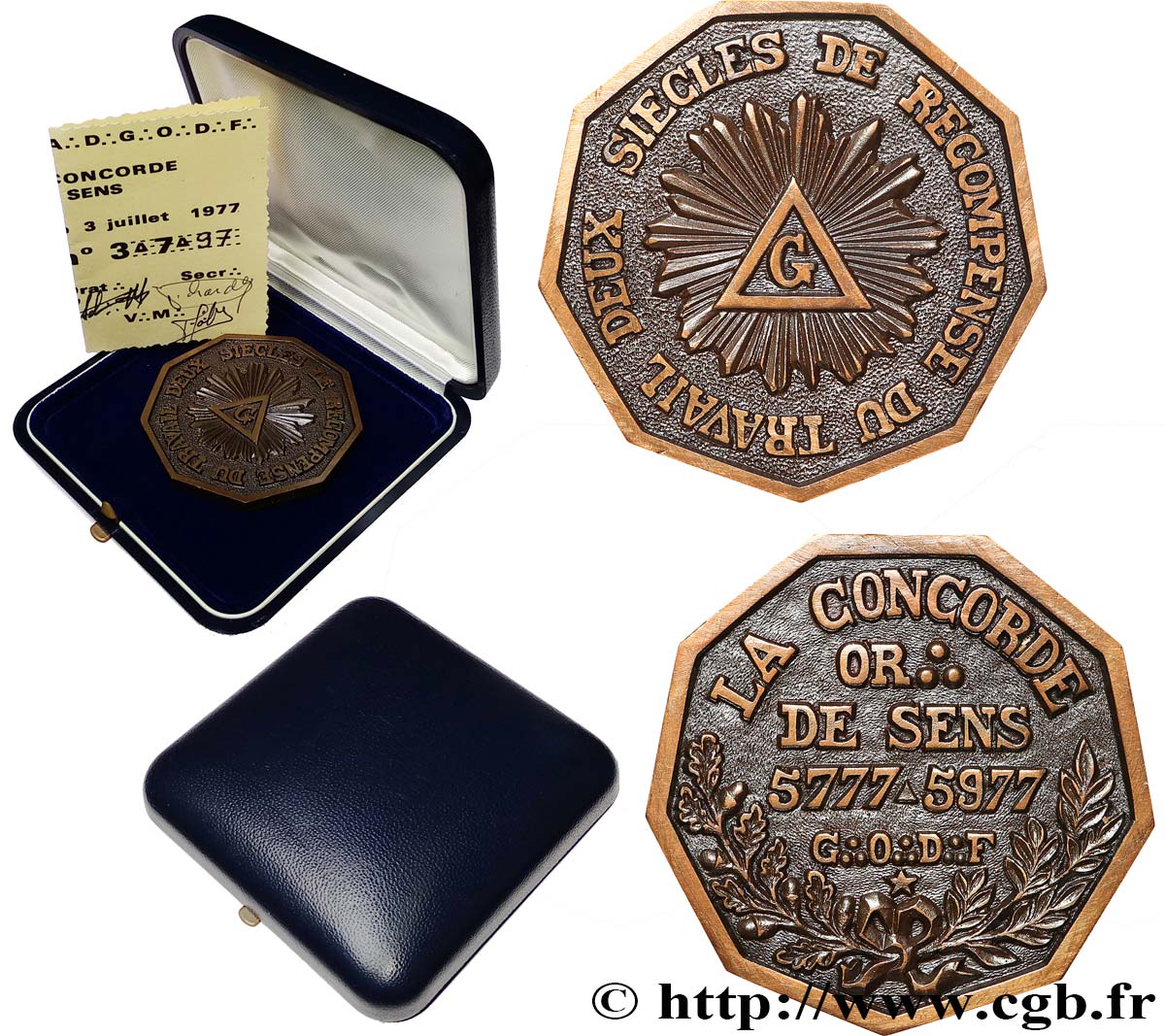
 Informar de un error
Informar de un error Imprimir la página
Imprimir la página Comparte mi selección
Comparte mi selección Haz una pregunta
Haz una pregunta Consignar / vender
Consignar / vender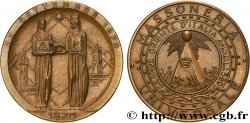
 Descriptivo
Descriptivo